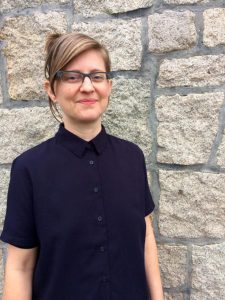Friday, October 30, 2020, 9am EST Zoom Meeting
A Practices of Commentary working group presentation by Dr. Amanda Goodman, Department for the Study of Religion and Department of East Asian Studies, University of Toronto
buddhist manuscript cultures
A Multilingual Manuscript from Dunhuang: P3861
Featured image: P3861, item 9; folios 62–63. Sanskrit prayer tranliterated in Tibetan script with interlinear Chinese notations and additions. Courtesy of the Bibliothèque nationale de France.
by Amanda GOODMAN
Over the past decade, I have spent a lot of time thinking about the Buddhist communities that flourished in the region of the Dunhuang Buddhist cave site in present-day Gansu province, China. Situated along the old Silk Road (fig. 1), Dunhuang served as a military garrison, way station, and pilgrimage site for well over a thousand years in what was then—and to a certain extent remains—a nexus of a wider regional “crossroads” populated by significant Chinese, Uyghur, and Tibetan communities. Many of these were Buddhist communities that left their traces in the books, buildings, and byways that for centuries lay buried beneath the desert sands.
[Read more…] about A Multilingual Manuscript from Dunhuang: P3861Amanda GOODMAN
University of Toronto
Amanda Goodman is Assistant Professor of Buddhist Studies in the Department for the Study of Religion and the Department of East Asian Studies at the University of Toronto. She specializes in premodern Chinese Buddhist traditions, with a focus on the development of Chinese esoteric Buddhist ritual during the eighth, ninth, and tenth centuries. Her first book project, Buddhism at the Margins: Essays on Esoteric Buddhist Ritual at Dunhuang (in preparation) explores the Buddhist training and practice communities documented in tenth-century Chinese and Tibetan ritual manuscripts from Dunhuang.
[Read more…] about Amanda GOODMAN

